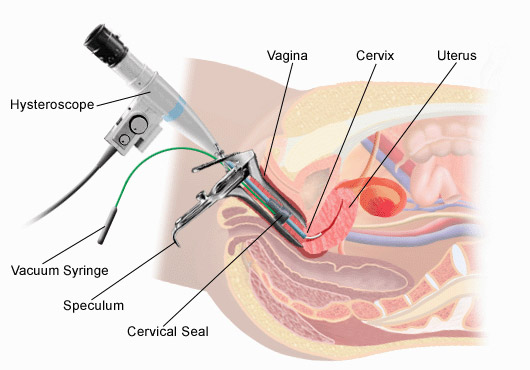Garbba Rakshambigai Fertility Centre, the best centre for fertility treatment in Chennai has performed successful endoscopic surgeries using various techniques like advanced laparoscopy, hysteroscopy, myomectomy, hysterectomy and ovarian surgery.
Laparoscopy refers to the surgery where key hole is used to view and perform procedures within the abdomen and pelvis. It can be used for general surgical, gastrointestinal, gynecological and urological conditions. It is also useful for several gynecological problems as explained below. Garbba Rakshambigai Fertility Centre has highly equipped instruments to carry out the tests and the surgery.
Diagnostic laparoscopy : In diagnostic laproscopy, the pelvic organs are viewed through the laparoscope to find out the cause of a problem. Common problems that can be detected by a diagnostic laparoscopy include blockage of the fallopian tubes, ovarian cysts, endometriosis, adhesions etc.
Removal of cysts : Abnormal cysts may sometimes be formed in the ovary. If they cause problems like abdominal or pelvic pain, they can be decompressed and eliminated through laparoscopic techniques.
Sterilization :Sterilization can be achieved laparoscopically with special techniques that can occlude both the fallopian tubes.
Endometriosis : Endometriosis is an abnormal growth lining the uterus (endometrium) outside the uterine cavity. This may result in the formation of adhesions and cysts that can be treated by laparoscopy.
Myomectomy : Myomectomy refers to removal of fibroid lumps. In most cases, this can be done laparoscopically. Please refer to our section on fibroids as well as myomectomy to learn more.
Hysterectomy : Hysterectomy (removal of the uterus) can be done with the help of laparoscopy in many cases. Please refer to our section on hysterectomy for more information
•Pre- op preparation usually includes blood tests, urine test, ECG, chest X- ray
• Laparoscopy will require you to have anesthesia. The anesthetist will see you prior to the surgery to make sure that anesthesia is safe for you.
•You will be asked to get admitted one day before the surgery and advised to take liquid diet on that day
•On the day of surgery you will be kept nil per oral (without food or liquids) for approximately 8 hours and started on IV fluids.
Laparoscopy is done under anesthesia and you will be totally unconscious during the procedure. A small stab, approximately 1.5cm in length, is made on the belly and through this stab, the abdomen (belly) is insufflated with carbon dioxide gas so that visualization in the cavity becomes easier. A camera attached to a tube (laparoscope) is placed through the same stab incision and the abdominal and pelvic organs can be visualized. The images from this camera are relayed on to a television screen. Several abnormalities can be detected while viewing in this manner. The condition of the reproductive organs is recorded as a part of diagnostic arthroscopy. Many abnormalities can be corrected with laparoscopy itself. When this needs to be done, another 1.5 cm stab incision is made and specialized instruments are passed through it to perform corrective work. The incisions are closed at the end of the procedure.
You will be provided with pain medicine in the immediate period following a laparoscopy. Since the procedure is done close to the digestive tract and under general anesthesia, you will be allowed to take food or liquids only after your bowels have resumed to function. The hospital stay is generally 2-3 days, depending on the nature of the procedure. Absorbable stitches are often used and these do not need to be removed. If non-absorbable stitches have been used, you may have to come back to get them removed. One of the main advantages of laparoscopy is that open surgery is avoided. This will lead to a quick recovery. The exact recovery time will depend on the individual and the treatment carried out through laparoscopy. Most people who have had a diagnostic laparoscopy return back to normal in two days time.

Laparoscopy can be easily combined with hysteroscopy in a single sitting. A comprehensive evaluation of the reproductive tract can be done using this technique. A camera is placed through a tube from the front of the belly (laparoscopy) and another camera is placed in the cavity of the uterus through the vagina. This technique is particularly useful in cases of infertility.
Talk to us if you have any queries on laparoscopy and regarding the best fertility treatments in Chennai. We have an expertized team to guide you on the treatment, how is it done.